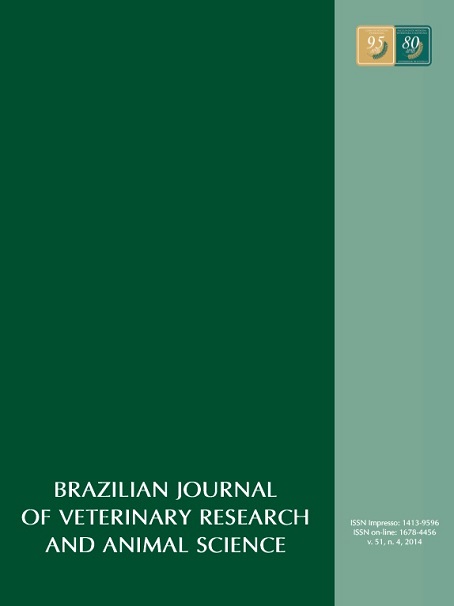Study of the frequency on the dog erythrocyte antigen 1, 1.1 and 7 and incompatible transfusion risk in different dog breeds and mongrel dogs of the metropolitan region of São Paulo-SP, Brazil
DOI:
https://doi.org/10.11606/issn.1678-4456.v51i4p316-323Keywords:
Canine blood typing, Dogs, DEA, Transfusion risk, Transfusion medicine veterinaryAbstract
This study aims to investigate the frequency of blood groups identified as Dog Erythrocyte Antigens (DEA) 1, 1.1 and 7 dogs in the metropolitan region of São Paulo-SP, Brazil, and calculate the risk of administering incompatible blood in both first and second transfusion. For both, 300 unrelated dogs were equally divided into six groups according to the breeds: German Shepherd (GS), Rottweiler (R) Poodle (P), Cocker Spaniel (CS); defined several races (DSR), mongrel dogs (M). We evaluated the relationship between the frequency of AEC and racial groups. The overall frequency of DEA 1 in population was 71% (DEA 1.1 – 53.35%) and there were variations according to the breeds: GS- 32% (DEA 1.1 – 20%), R –98% (1.1 – 80%) P – 76% (1.1 – 54%), CS-84% (1.1 – 50%), DSR- 62% (1.1 – 56%) and M –- 74% (1.1 – 60%). The overall frequency of BCE 7 was 39.33%, and there were no significant differences between the breeds. The risk of a dog negative DEA receiving 1 positive blood was 0.6 to 66.6% in the first transfusion and 0.21 to 65.3% from the same animal dog receiving incompatible blood transfusion in a second. The risk of the DEA 7 was 23.86% in the first transfusion and 9.4% in a second transfusion. This study concluded that there was variation in the frequency of DEA 1 and 1.1, but not on the DEA 7 between races. This variation in the percentage of positive animals to DEA 1 was reflected in the large variation in the risk of use of incompatible blood. Therefore, knowing the frequency of the DEA in the population has a direct impact on handling dogs between donors and recipients, but the joint use of testing blood typing and cross-reactivity reduces the possibility of incompatible blood transfusion.
Downloads
Downloads
Published
Issue
Section
License
The journal content is authorized under the Creative Commons BY-NC-SA license (summary of the license: https://





